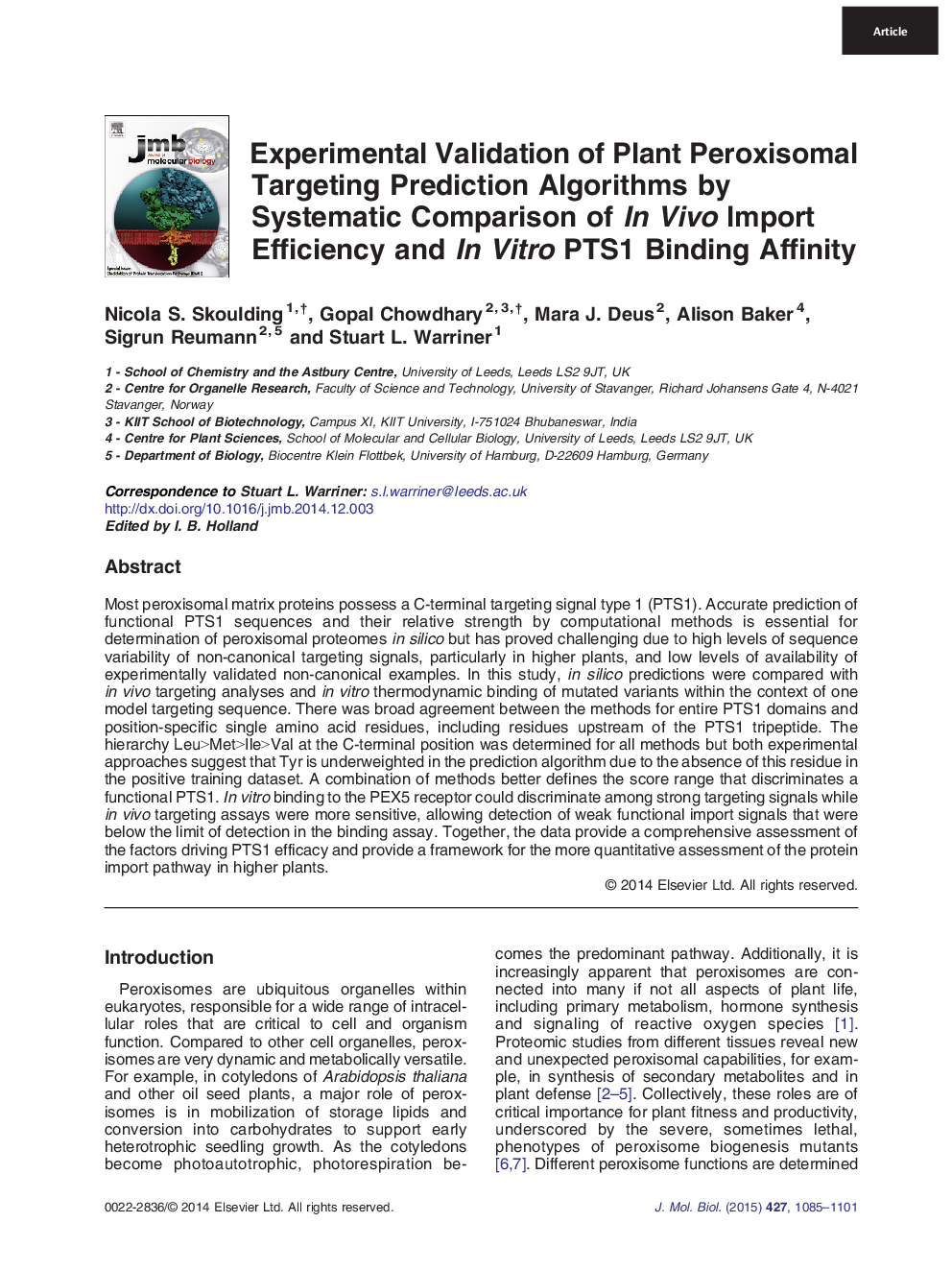| کد مقاله | کد نشریه | سال انتشار | مقاله انگلیسی | نسخه تمام متن |
|---|---|---|---|---|
| 2184387 | 1095833 | 2015 | 17 صفحه PDF | دانلود رایگان |

• Peroxisome targeting predictions for mutagenized PTS1 domains were tested in vivo.
• Quantitative binding data between PEX5 and PTS1 cargo were determined and compared.
• A combination of methods better defines the threshold that predicts functional PTS1s.
• More accurate in silico prediction of plant peroxisomal proteomes can be achieved.
Most peroxisomal matrix proteins possess a C-terminal targeting signal type 1 (PTS1). Accurate prediction of functional PTS1 sequences and their relative strength by computational methods is essential for determination of peroxisomal proteomes in silico but has proved challenging due to high levels of sequence variability of non-canonical targeting signals, particularly in higher plants, and low levels of availability of experimentally validated non-canonical examples. In this study, in silico predictions were compared with in vivo targeting analyses and in vitro thermodynamic binding of mutated variants within the context of one model targeting sequence. There was broad agreement between the methods for entire PTS1 domains and position-specific single amino acid residues, including residues upstream of the PTS1 tripeptide. The hierarchy Leu>Met>Ile>Val at the C-terminal position was determined for all methods but both experimental approaches suggest that Tyr is underweighted in the prediction algorithm due to the absence of this residue in the positive training dataset. A combination of methods better defines the score range that discriminates a functional PTS1. In vitro binding to the PEX5 receptor could discriminate among strong targeting signals while in vivo targeting assays were more sensitive, allowing detection of weak functional import signals that were below the limit of detection in the binding assay. Together, the data provide a comprehensive assessment of the factors driving PTS1 efficacy and provide a framework for the more quantitative assessment of the protein import pathway in higher plants.
Figure optionsDownload high-quality image (80 K)Download as PowerPoint slide
Journal: Journal of Molecular Biology - Volume 427, Issue 5, 13 March 2015, Pages 1085–1101